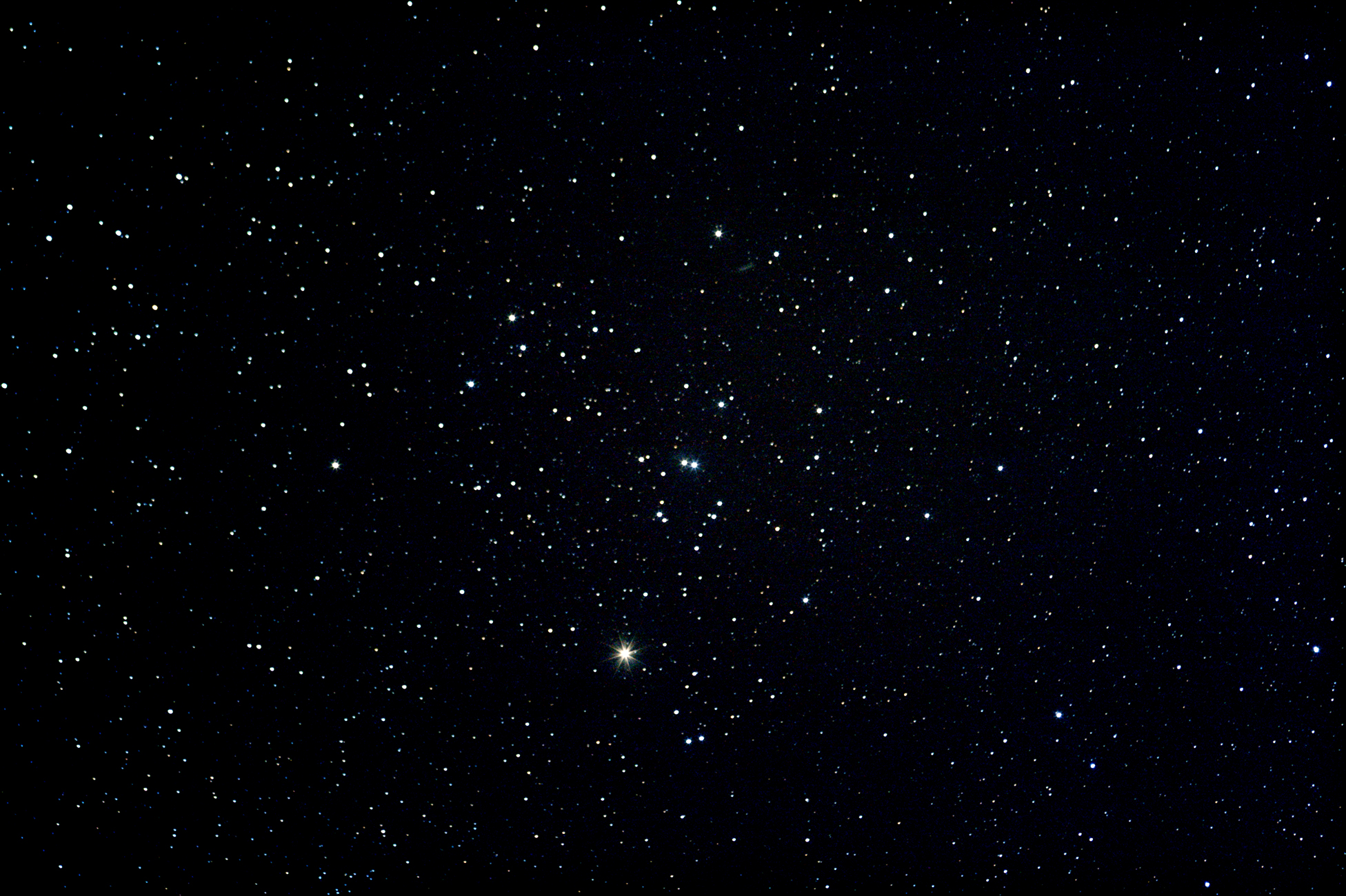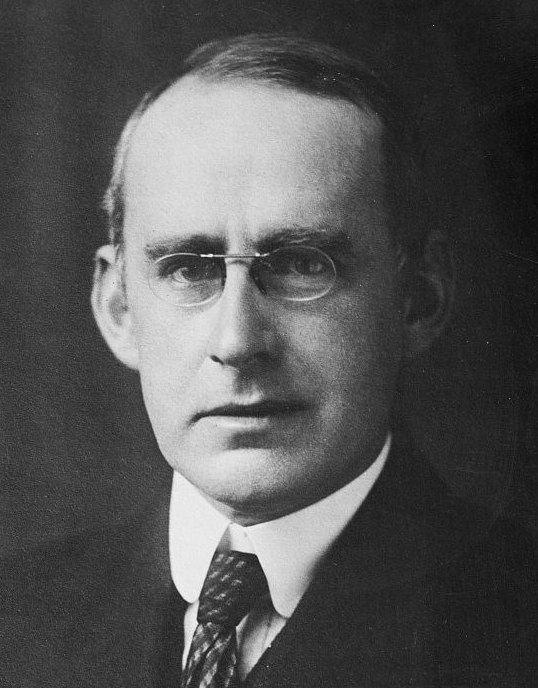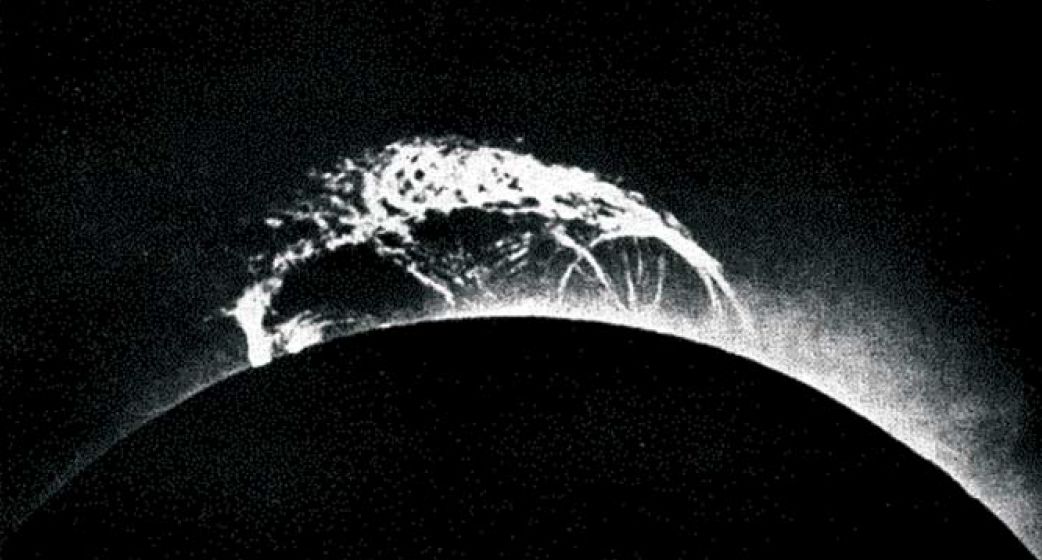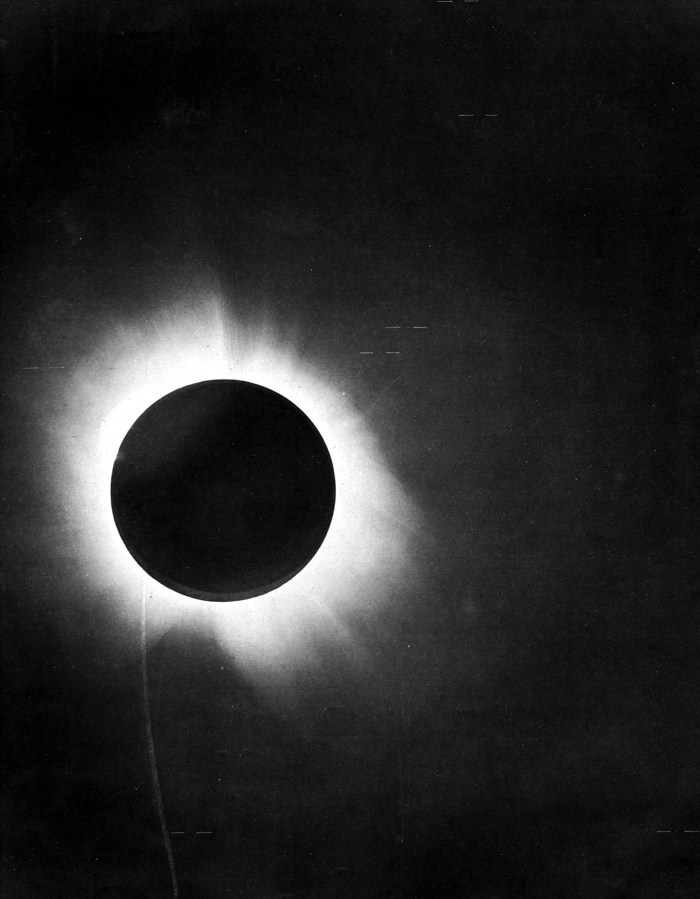The 1919 solar eclipse experiment that confirmed relativity was built with sweat and hard, physical labor
The work that advanced science and made Einstein famous, in the light of an eclipse
On March 8, 1919, two pairs of Englishmen boarded the steamship Anselm in Liverpool, carrying glass lenses the size of tea platters in their luggage. Porters had already stowed the men’s heavier cargo. A civil engineer had handcrafted collapsible huts from wood and canvas for the pairs. Mechanics had fashioned housings for glass photographic plates and cylinders of rolled steel that the men could lock together into optical tubes. A clockmaker had helped assemble a mechanism, which advanced by a falling weight, to track an object moving slowly across the sky.
The Englishmen were headed into the equatorial heat, with their astrographs and portable shelters, to photograph a total eclipse of the sun at the end of May. Arthur Eddington, the Plumian Professor of Astronomy and Experimental Philosophy at Cambridge University, and his friend, clockmaker Edwin Cottingham, were traveling to the island of Príncipe, in the Bight of Biafra, off the west coast of central Africa. Their companions, Charles Davidson, a human computer, and Andrew Crommelin, an assistant at the Royal Greenwich Observatory in London, were destined for Sobral, a small town in northeastern Brazil. The two pairs intended to discover what effect, if any, gravity had on light. They wanted to learn, in other words, whether light had any weight.
Light does not have any discernible mass, so why should anyone believe that it has any weight? How could anyone suggest that gravity has any influence over the immaterial? The reason, in 1919, was a new conception of space.
What is space? Is it a vessel for our experiences? Is it a set of axes on which we plot the schemes of moving objects? Is it the expanse between things? Is it an emptiness, a vacant stage for our dramas? When we remove everything from the universe, is space what remains? Is space a material substance, one we might also remove?
During the First World War, Albert Einstein had generalized his theory of relativity, which unexpectedly implied an answer to such questions. In general relativity, space is dynamic. It could stretch or ripple. The mathematics behind these contortions was abstract, but abstractions did not stretch or ripple. So space was no empty vessel. It was a structure, one that warped in response to the presence of matter and energy, like paper curling in a flame.
The relationship between the curvature of space and the matter that suffused it was also reciprocal — matter compelled space to curve, and this curvature forced matter to move. The curvature of space, in other words, was actually the force of gravity. The orbits of planets had traced elliptical paths around the sun, revolving in its gravitational pull. But in Einstein’s theory, the planets still traveled in straight lines. They were just taking the straightest paths through the curved space around them.
Mass is an inherent property of matter. Weight, on the other hand, records an object’s interactions with gravity, which is just the curvature of space. Even a photon of light, a particle without mass, should bank to the same curvature that planets do.
In 1911, Einstein had calculated that even in Newton’s law of gravitation, which was more than 200 years old, light deflected around the sun. According to Einstein’s new conception of space, light would deflect twice as much as it did owing to Newton’s law. Either way, light had a weight.
___
Frank Dyson, the director of the Royal Greenwich Observatory and the Astronomer Royal of Britain, conceived of the expeditions to the equator to observe the eclipse two years before it was predicted to occur. Davidson, his human computer, had taken photographs during an earlier eclipse, and the moon had obscured enough sunlight, despite a visible crown, that a backdrop of stars became visible near the sun. Dyson realized that he could compare these photographs to others taken of the same stars in the same relative positions, but in the absence of the sun in eclipse. He might thus determine whether the magnitude of the sun had influenced the light from the stars. The light should be attracted by the sun’s gravity, and refract towards it. From our vantage on Earth, however, the stars would appear farther from the edge than they are.
There were not enough stars in Davidson’s photographs to test this idea. But during the impending eclipse, when the path of totality spanned South America and Africa, the bright stars of the Hyades cluster would be visible near the sun. Dyson believed that photographs of these stars before, during, and after the eclipse would reveal that their light shifted away from the sun.

The Hyades cluster
Todd Vance via Wikimedia
But the world was still at war. At Cambridge, Eddington was a pacifist, as Einstein was in Berlin, and he was also the greatest advocate for Einstein’s new conception of space. Eddington was exempt from military service as an astronomer but, during the worst of the combat in the trenches, his exemption was rescinded and he feared imprisonment as a conscientious objector. Dyson, however, had connections within the Admiralty, and he asked that Eddington be excused to lead an expedition that would demonstrate England’s prominence in science over the enemy. Despite the frivolity of observing an eclipse to measure the weight of light during wartime, and to confirm a German theory, Dyson procured £1,100 from the British government, roughly £61,400 today.
In preparation for the voyage, Eddington obtained micrometers to measure the tiny shifts of starlight on photographic plates. And he studied how best to develop those photographic plates in hot and humid conditions. He wanted to avoid distortions that could mimic the warping of space.

Arthur Eddington
After departing from England on the Anselm in March 1919, Eddington and his companions traveled together as far as the Portuguese island of Madeira, where they saw a jetty of masts in the harbor, from ships sunk during the war. Eddington and Cottingham waited there for a steamship to Príncipe while Davidson and Crommelin continued to northern Brazil.
Crommelin and Davidson toured the Amazon River and its surrounding forest before they arrived in Sobral, which was in the throes of a drought. They thought the town barren and depressing, but they lodged for free in the house of a local administrator and colonel, who owned a cotton factory and had running water. Every other local had to dig wells for water in the heat.
Crommelin and Davidson installed their portable observatory inside the racetrack at the Jockey Club, and they relaxed in the shade of the grandstand. The Brazilian government employed laborers to construct platforms for their telescopes and their shelters. When strong winds destroyed the first hut, carpenters built a sturdier encampment, under which the British could work when the temperature reached 100 degrees Fahrenheit. Bricklayers fashioned pedestals for the clockwork mechanisms, which the Englishmen then attached to mirrors. The mechanisms could rotate the mirrors to center the image of the eclipse for several minutes, reflecting its light into two long telescopes, which sat side-by-side under the new structure like idle artillery.
Across the Atlantic, Eddington and Cottingham arrived on Príncipe, a Portuguese colony, in late April. Eddington had asked the colonial government to write a letter of introduction to Jeronymo Carneiro, a former bullfighter who owned the largest private plantation on the island, Roça Sundy. Eddington and Cottingham chose to observe the eclipse among Carneiro’s cocoa trees.
For centuries, Príncipe was a depot for the slave trade. Although slavery had been abolished four decades earlier, the laborers were still largely from Portugal’s other African colonies, and some were still rumored to be involuntary. These field hands carried the Englishmen’s crates from a railroad terminus to the plantation, more than a kilometer through dense woods. They then assembled Eddington and Cottingham’s astrograph inside a small addition to the plantation house.

The eclipse instruments at Sobral.
On the morning of the eclipse, May 29, 1919, the skies above Sobral and Roça Sundy were overcast. The skies emptied over Sobral and remained uncluttered for much of the eclipse. Leocadio Araújo, an agronomist and one of two locals who spoke English, called out every tenth beat on a metronome while Crommelin and Davidson changed photographic plates in different measures. At Roça Sundy, the clouds parted only slightly after the partial eclipse began in the afternoon. Eddington and Cottingham had come so far that they took photographs anyways.
Neither group of men ever recorded any feelings of awe during the alignment of the heavens, which even the locals stopped to behold. Eddington admitted in a letter home to his mother: “I did not see the eclipse, being too busy changing plates, except for one glance to make sure it had begun, and another half-way through to see how much cloud there was.” He missed the solar prominence, an archway of flame that rose 100,000 miles above the surface of the sun, captured in his photographs.

The solar prominence that occurred during the 1919 solar eclipse.
Royal Astronomical Society via Smithsonian Astrophysical Observatory/NASA
Eddington and Cottingham took 16 photographs of the skies through their astrograph. Crommelin and Davidson exposed 18 plates using theirs, and eight more in the smaller telescope that they had brought along as a backup. That night, in the darkness, thousands of miles apart, they developed the first of their plates.
Eddington and Cottingham had only two photographs with enough stars to analyze, but seven plates from Crommelin and Davidson’s backup had captured seven stars. Most of the plates from their astrograph revealed up to 12. But after the first plates from their astrograph dried in the parched air, the two men was distressed. As they described in their notebook: “It was found that there had been a serious change of focus, so that, while the stars were shown, the definition was spoilt.” The heat from the direct sun had warped the mirror that reflected light into their astrograph. They could not distinguish the curvature of space from the distortion of the images.
___
Crommelin and Davidson left the drought of Sobral for the damp cool of Fortaleza, the state capital. They did not return for more than a month, to take photographs of the stars in the same relative position, but without the eclipse, as a control to measure the shift of their light. Eddington and Cottingham had already left for home.
Astronomers back in England had taken crisp photographs of the Hyades cluster above England as a control. Eddington preferred to do tedious calculations to account for the relative positions of the stars above England and Príncipe, rather than wait for six months to take his own photographs on the island. As he wrote to his mother from aboard the SS Zaire, “the one good plate that I measured gave a result agreeing with Einstein and I think I have got a little confirmation from a second plate.” He had already seen all that he needed on his two photographs of the eclipse to believe in general relativity. He was hurrying home to spread the word.

The 1919 solar eclipse, imaged from Sobral.
Crommelin and Davidson did not return to England until late August. At that point, Eddington was already telling their colleagues that he had likely confirmed the prediction of Einstein. On September 12th, during a meeting of the British Association for the Advancement of Science, Eddington publicly revealed his two photographs, although he did not tout them as certain proof. Ten days later, the news that general relativity might be confirmed reached Einstein in precarious Berlin.
That September, Frank Dyson and his assistants checked every location of the stars on their plates against their control photographs, twice. Eddington inquired about their progress but did not interfere. The shifts of the stars that Dyson measured on the photographs taken with the corrupted mirror were close to the prediction from Newton’s law. The results from the backup telescope, however, with fewer photographs and fewer stars, matched the prediction by Einstein. Frank Dyson was skeptical of general relativity. But he credited the curvature of space rather than Newton’s law in a warped mirror.
___
On November 6, 1919, under a painting of Isaac Newton at the Royal Society in London, Dyson, Eddington, and their colleagues announced that all of the photographs taken during the eclipse, five months earlier, had revealed that light from the stars in the Hyades cluster shifted while glancing by the sun. Light, Eddington said, had a weight.
Neither Dyson nor Eddington claimed, however, that they had proven Einstein’s theory, in which space was curved. Instead, Eddington said: “When a result that has been forecasted is obtained, we naturally ask what part of the theory exactly does it confirm. In this case it is Einstein’s law of gravitation. It is not necessarily his theory that is confirmed.” They had observed only enough to believe in the deflection that Einstein predicted, not the full apparatus of the mathematics that accompanied it.
Their colleagues agreed. J. J. Thomson, the president of the Royal Society, who presided over their announcement, said: “The weak point in the theory is the great difficulty in expressing it. It would seem that no one can understand the new law of gravitation...”
Eddington later insisted that astronomers would have to observe more eclipses to confirm Einstein’s theory. The press declared differently. One day after the announcement in November, the headline in the Times of London blared: “Revolution in Science; New Theory of the Universe; Newtonian Ideas Overthrown.” Three days later, the New York Times mentioned Albert Einstein for his science, rather than his pacifism, for the first time.
___
The observations of the deflection of light during the eclipse of 1919 did not incite a revolution, but they did make Einstein and Eddington famous. Beneath that fame, however, was the tremendous labor so often neglected in public accounts of the pure science. It demeans science to paraphrase its accomplishments as the epiphanies of singular men. Even in the confirmation of the most austere of mathematics, someone has to get dirty.
General Relativity was slowly confirmed over the subsequent decades, thanks to many further observations of eclipses and other heavenly phenomena. And the deflection of light, through the lens of curved space, has recently permitted hundreds of astronomers, from 20 nations on five continents, including two at observatories in South America, to combine their data and photograph the most profound curvature of space, a black hole. Even Einstein never predicted that.